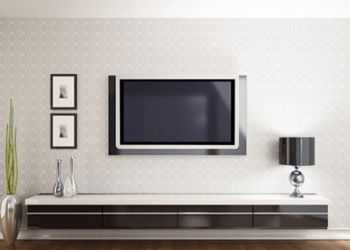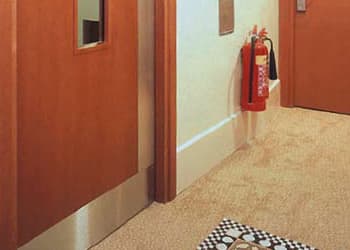Costly Soundproofing Mistakes
The following section is taken in the main from an original e-zine article by Craig Williams, founder of an organisation called SoundProofing Secrets.com in America.
Because we here at JCW Acoustic Supplies believe the USA is at least 10 years ahead of the UK in terms of an awareness about the need and importance of effective soundproofing, we are delighted to re-print the article here.
Mistake 1: Trying to Get Even With Your Noisy Neighbours
A lot of noise pollution is caused by noisy neighbours. It’s normal to assume that any neighbour who makes an annoying noise must be inconsiderate. In reality most neighbours are actually reasonable people and they might be quite unaware that they are creating a noise problem.
So as a first step, try having a friendly conversation with them. Use language like: I need your help with something which you are probably not even aware of. Your dog seems like a great pet and friend but sometimes he barks during the early hours of the morning and it wakes me up. I can’t get back to sleep which means I’m very tired during the rest of the day. I know it’s normal for dogs to bark – the solution might be as simple as keeping him inside or in another part of the yard at night. Do you mind if we discuss this some more, perhaps you could come over for a coffee and I’ll show you where my bedroom is and why it affects me so much.
It is important to keep the discussion friendly even though you might feel very annoyed with your neighbour. People with barking dogs are usually aware of the problem and secretly hope that no one will complain. This means that they also expect that one day they will have to do something about the issue.
Under no circumstances should you consider retaliating by making your own noise, this will never solve the problem and could result in the police becoming involved.
Mistake 2: Buying “Any” Soundproofing Material
There are many different types of noise pollution. The type of material and the techniques you need to use to solve your problem will require a good understanding of the exact noise source and problem. The simplest noise variables are how high pitched the sound is (e.g. bird chirping) or how deep it is (e.g. stereo sub-woofer or booming traffic). Other important variables are how loud the noise seems, where it is coming from, the sorts of building material that it is passing through (e.g. windows, walls and floors) and whether the noise is continuous or intermittent.
These are not difficult things to determine, but you do need to do a little homework and preparation and you certainly need to know these things before you buy any soundproofing materials.
You need to be able to describe your noise problem very clearly, know its source and know what type of solution you are seeking. You also need to know what sorts of solutions you can use e.g. do you lease your apartment or flat and therefore must not make any permanent changes to the structure?
Mistake 3: Listening to “Old Wives Tales”
Beware that some materials and techniques just do not work despite the endless exposure that they seem to attract. What’s more frightening is that using the wrong material or technique could actually make your problem worse, for example some materials will actually appear to make a noise louder or change it to something even more irritating.
Aside from the obvious myths around egg boxes and plastic window film which are essentially useless as soundproofing materials, other materials and techniques to be suspicious of include:
- Old carpet
- Cardboard
- Special paints
- Fibreglass batts e.g. the type used for thermal insulation
- Rubber e.g. old rubber mattresses and floor mats
- Any type of mattress secured to a floor or wall
- Dry cellulose fibre pumped into walls or floors
- Timber sheets (unless they are uncoupled)
- Corrugated or pyramid shaped foam like the type used in recording studios – this does not stop noise passing through walls, it simply dampens noise which is already in the room.
In short you need a credible, unbiased guide to solving your noise problems. The alternative is trying to sift through the science, logic and truth behind each material and technique and then learning how and where to install the material.
Even if you had the time to attempt this self education, it is a very frustrating process and there is no way of knowing whether you really have really reached the right conclusion until after you’ve completed the job. You could end up spending more time and lots of money on methods and materials which do not properly solve your problem.
A simpler solution is to ask JCW Acoustic Supplies for some free advice.
Mistake 4: Coping when you are Exhausted & Annoyed
Noise pollution can drive you to despair and can literally impact on the health and happiness of you and your family. As a matter of urgency you should consider finding an immediate “compromise solution” to your problem. The most rational, cheapest and fastest compromise is a set of high tech ear plugs. People often think this is a joke – it’s not. These days it is possible to buy very comfortable and very effective high tech ear plugs which are designed to reduce significant noise. You can buy one or more pairs and start catching up on your sleep and thinking time. Once you have reclaimed your sanity you will be in a far better state of mind to embark on manageable longer term solutions to your noise pollution problems.
Mistake 5: Replacing “Float” Glass with “Laminated” Glass
Laminated glass does give some additional benefit but not as much as you might think. In addition laminated glass is expensive. You would actually achieve a much better effect if you left the existing sheet of glass in your window and secured a second slightly thicker piece of normal (float) glass to your window frame with an air cavity of an inch or two between the two panes. A four inch (100mm) separation between the sheets of glass and some moisture absorbing powder in the cavity gives excellent results and can be done on a budget. This technique is definitely easier than replacing existing window glass with a new laminated pane.
Mistake 6: Complaining to Local Authorities about the Noise
Most things involving complaints to Local Authorities are time consuming, costly, demoralising and often get you no closer to solving your problem. Anyone who has ever locked horns with any type of bureaucracy will tell you that even when you have a valid complaint the bureaucracy will take forever to do anything.
In the meantime you still have to put up with the noise problem and you get more and more stressed and feel more and more like you have lost control over your private world.
We’ve heard of people who have been asked by local Council to keep a diary of their noise problem for a whole year! Unfortunately most organisations like local government or even the police do not have the noise measuring equipment or proper understanding of noise and environmental laws to properly enforce them anyway.
So instead, put all of your energy into things that you have control over and look for quick wins which will build your confidence and restore your quality of life. The ear plug advice in Mistake No. 5 is a simple example of a quick and inexpensive win over annoying noise pollution.
Mistake 7: Taking a “Best Guess” on Installation Techniques
Even if you have bought effective soundproofing material, most of the effectiveness of the material will actually come from correct installation.
There are two installation considerations:
1) Correctly securing the soundproofing material.
A common reason why soundproofing material fails is because it is not properly isolated from the surfaces which are transmitting the problem noise. For example many people purchase floating floors in an attempt to reduce noise transmission between levels. This often fails because the floating floor is not adequately isolated from the original floor.
Floating floor manufactures usually provide a cheap thin membrane to put down on the existing floor before installing the floating floor. The manufacturers usually assure you that you are doing the right thing. Sadly it seems few floating floor retailers know very much about soundproofing. What’s more it seems that few retailers of any of the products commonly used in soundproofing systems really have a good understanding of soundproofing science and the hidden traps.
For complete reassurance, talk to us here at JCW Acoustic Supplies
2) Correctly placing the soundproofing material.
Even if the soundproofing material is correctly installed and secured, unless it is installed in the right place it might not solve the noise problem. For example a product called mass loaded vinyl (MLV) is a very effective soundproofing material. If MLV were used to reduce sound transmission between two levels of a dwelling, it would work very well if secured to the ceiling of the lower dwelling i.e. under the noisy floor but it would have poorer performance if installed on top of the noisy floor.
A great help to domestic soundproofing is reliable do-it-yourself information which is clearly laid out with simply diagrams and unbiased materials reviews.
To guide the correct installation of our products, detailed Installation Guides are available to download fro our website.
Mistake 8: Not Following the Right Soundproofing Technique
Again this mistake relates to having reliable unbiased do-it-yourself information which is clearly laid out and which you can carefully follow.
Remember a properly placed piece of soundproofing can fail if you lose your way during the installation process. There is a lot of data to suggest that a small break in any soundproofing “system” can results in profound reduction in its performance.
This is not something you have to worry about if you are patient person and you are prepared to be careful and follow a good set of instructions. Again, more reason enough to ensure that your mind is in the right place, that you are calm and are not rushing desperately and erratically to get rid of the noise pollution. See Mistake 5.
Again, for total reassurance and best advice, talk to JCW Acoustic Supplies
Mistake 9: Thinking Gaps are bad so Cavities must be Too.
Many people believe that the secret to solving noise problems is filling or packing spaces.
It’s true that the first step in any soundproofing plan is making things airtight but this is very different to filling spaces in walls, floors or windows. The truth is air in an airtight cavity can be an excellent soundproofing “material” in certain circumstances.
To make the most of air cavities their size and number need to be carefully considered.
So as with all the points raised above, be careful not to rush into pumping, pouring or packing any cavities until you are very clear what it is you are trying to achieve – but definitely aim to make all walls, doors, windows and floors airtight.
Finally, remember – if you have an acoustic problem – talk first to the experts here at JCW Acoustic Supplies




